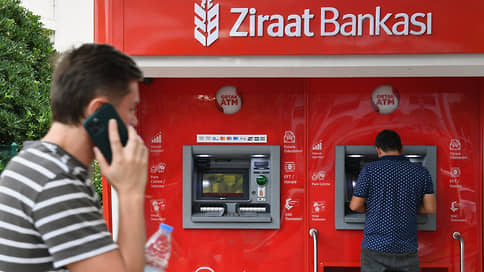Few Russian tourists are ready to open the Turkish Troy card yet
[ad_1]

Through the application, which helps Russian tourists open the Turkish Troy card, 0.25 billion rubles were passed in three months of operation. from 30 thousand active users. Compared to the total flow of Russian tourists, this is not much, but the application developers expect the audience to grow by more than half a million tourists by the end of next year. Experts have not yet noted any noticeable demand among Russians for Turkish cards, including against the backdrop of existing alternatives in the form of cash, as well as partially functioning cards of Russian banks.
According to the company that developed the Letim application, which allows you to open a virtual card of the Turkish payment system Troy and top it up from accounts in Russian banks (see Kommersant on August 3), in the three months after its launch, Russians spent more than 250 in Turkey with its help. million rubles At the same time, the number of active users of the application was 30 thousand, they made about 100 thousand transactions during the period from August to October, the average amount of which was approximately 850 liras (about 2800 rubles).
As the company told Kommersant, the majority of transactions were cash withdrawals from ATMs (61%), another 38% were payments at retail outlets and catering establishments, and 1% were online payments.
The developers expect that by the end of this year the number of active users of the application will reach 50 thousand, and by the end of next year it will exceed 0.5 million. By this time it is planned to reach 30 thousand transactions per day for 100 million rubles. Growth should be facilitated by the introduction of simplified registration, the developer company explained. Now it is possible to simply register without a passport with a limit of up to 2.75 thousand liras (about 9 thousand rubles). At the time of launch in August, it was necessary to provide a digital scan of a biometric passport and it was possible to top up the virtual card through the SBP for 250 thousand liras per month (about 850 thousand rubles).
The number of app users looks insignificant compared to the flow of tourists to Turkey. According to the FSB Border Service, Russians made 4.6 million trips to Turkey in January-September this year, of which 2.3 million trips were made in the third quarter. According to calculations by the Turkish Institute of Statistics, for the first nine months of the year, tourist spending (from all countries) averaged $942 per person. Executive Director of the Association of Tour Operators of Russia Maya Lomidze draws attention to the fact that a significant part of Russians in Turkey are organized tourists vacationing on an all-inclusive basis. In addition to tour expenses, the expert estimates they spend $400–500 on excursions and personal expenses. Thus, if on average a tourist makes about 3.3 transactions per trip through the application with an average amount of 2800 rubles, then one tourist for a vacation accounts for about 9000 rubles, or $100, that is, 20–25% of the average amount of expenses, assessed in ATOR.
However, the Troy card is not in demand among tourists. According to Maya Lomidze, those traveling to Turkey more often choose cash or UnionPay cards from Russian banks. According to Intourist representative Daria Domostroeva, “in resort towns you can exchange money in almost any store, payment in dollars is available, in some cases tourists can resort to private exchange through guides or hotel employees.” One of Kommersant’s interlocutors in the tourism market says that in tourist cities it is possible to withdraw money or even pay with Russian cards through the terminals of Turkish banks. But the latter, according to him, do not advertise this possibility, since “it is interpreted as circumventing sanctions.”
In addition, in resort cities it is possible to pay with cards of Russian banks and even SBP through the terminals of Russian banks (see “Kommersant” dated October 27, 2022). As Roman Prokhorov, head of the board of the Financial Innovation Association (AFI), explained, to ensure the acceptance of Mir cards, a number of Russian banks implement acquiring payment schemes through their terminals installed in the places most visited by Russian tourists. “Paying for SBP through the SigmaPay service also works, but there is a fairly high commission (2%) and not the most favorable conversion rate into Turkish lira,” he notes.
[ad_2]
Source link





